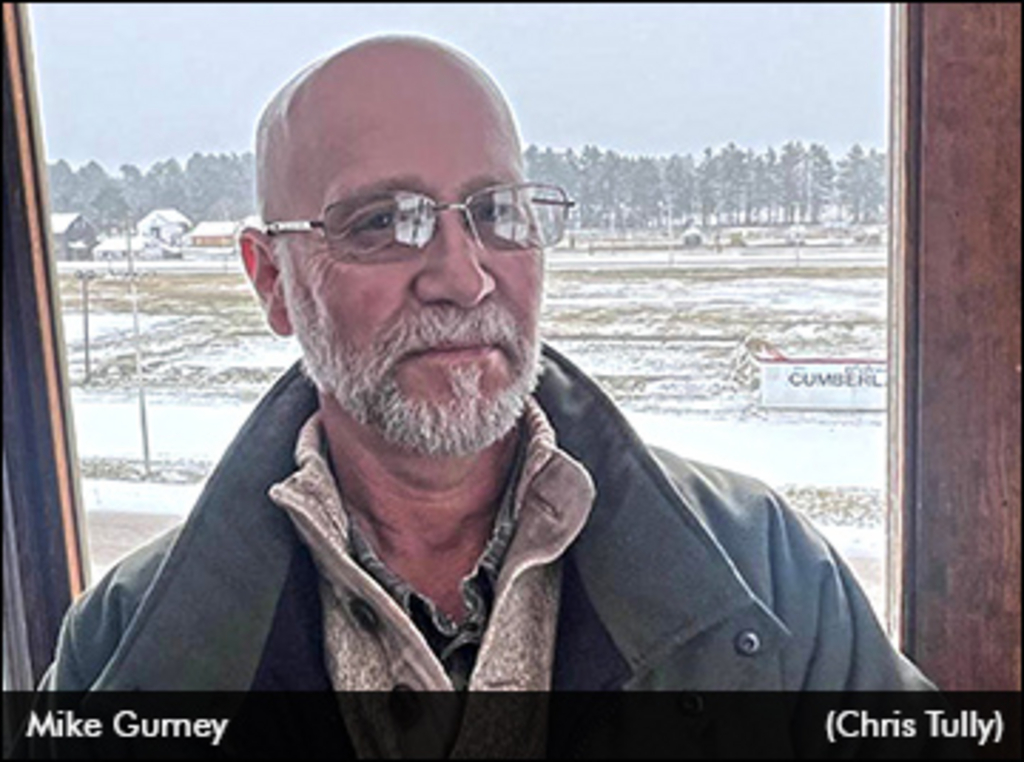
Much of the wagering on today’s horse races comes from advance deposit wagering sites (ADW’s) and simulcast locations. With 80 to 90 per cent of the handle generated off-site on North America’s overnight harness racing programs, it is imperative to have a clean, crisp television signal of the racing product, coupled with excellent graphics to help bettors navigate the changing landscape of the pari-mutuel pools of each event.
That’s where Mike Gurney comes in. Affectionately known as ‘International Sound Mike,’ Gurney has been helping tracks look good for more than 20 years. Beginning his work in the field as a Satellite Uplink Operator for Trident Media Group of Carlsbad, California, Gurney was one of the first in Maine to be employed in this technologically advanced industry.
Gurney recalled, “I grew up in an area of Maine that had one of the first satellite uplink stations, known as the Andover (Maine) Earth Station. So I grew up hanging around there, and worked my way from one into the other.”
The Andover Earth Station was built by AT&T in 1961 to communicate with the Telstar 1 satellite, the first direct relay communications satellite. It provided the first experimental satellite telephone and television service between North America and Europe. Although this giant horn was dismantled in the mid-1980s along with the visitor center, it still serves a reminder of how far science has journeyed into the telecommunication universe.
Formerly a machinist that built diesel engines, Gurney ultimately found a niche in ‘Sat Com’ that he enjoyed and was a welcome addition to the growing pari-mutuel environment in the Pine Tree State. The Rumford, Maine native started working in and around Maine harness racing 25 years ago, and has been with International Sound for the last 20.
A typical ‘day in the life’ of Mike Gurney starts at midnight the day before the fair meet is to open, which is usually preceded by a 100-mile journey. In describing the harness track ‘set-up’ process, he notes that his title changes with the landscape. Sometimes he is an operator, sometimes a technician, and other times, like at Cumberland, he is the site supervisor.
“First, I carry everything into the facility; the photo finish, lighting, cameras, and so forth. Then, I spend the rest of the evening setting that up. Often, it also involves bringing in a satellite uplink truck, finding the satellite, and then broadcasting a test signal,” notes the 57-year-old tech guru.
“Then we hope everything is going to continue to work at noon the next day, and make believe like it’s always been there!” Gurney closes with a laugh.
Counter intuitive to what an outsider may assume Gurney's job is not entirely dependent upon the internet.
“I get the entries and horse information online, but after that, all of our signals go directly to the uplink truck. Then it is up to the satellite to broadcast the live feed out to the betting public.”
Of course when everything works, no one notices all the hard work behind the scenes to provide a seamless viewing experience. However, when asked about his greatest concern, the answer is somewhat of a surprise.
“Monster trucks, I hate monster trucks,” Gurney stated emphatically.
“This happens all over the state of Maine. You show up on day one, and everything is working fantastic. You think your life is great until you arrive two hours before the live racing starts and someone says, ‘Hey! Did you see what the Monster Trucks did to all your cables that went down to the paddock?’”
At the beginning of the New Year, Gurney plans to turn over the broadcast controls, and the Monster Truck concerns, to the next generation. Wednesday (Dec. 29), First Tracks Cumberland will recognize the "TV Man" for his 20 years of dedication and service to harness racing in the state of Maine.
(First Tracks Cumberland)

